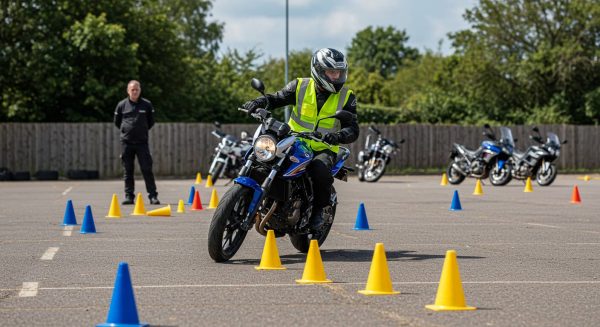The UK motorcycle licensing system has evolved significantly over the years, aiming to balance rider accessibility with road safety. Understanding these requirements is crucial for anyone looking to start their two-wheeled journey.
Compulsory Basic Training (CBT)
The foundation of motorcycle licensing in the UK starts with compulsory basic training (CBT). Approximately 180,000 CBTs are issued annually, yet only around 45,000 riders progress to take their full test. The CBT certificate remains valid for two years and allows riders to operate a motorcycle up to 125cc with L-plates displayed.
Age-Based Licensing Categories
The current system operates on an age-based progressive structure:
At 16, you can ride a moped with a maximum speed of 28 mph (45 km/h) after completing CBT. By 17, riders can access the A1 licence category, allowing them to ride motorcycles up to 125 cc with a power output not exceeding 11 kW. Those aged 19 can pursue the A2 licence, permitting access to motorcycles up to 35 kW. The full unrestricted A licence becomes available at 24 through direct access or earlier through progressive access.

The Progressive Route
Rather than waiting until 24 for direct access, many riders choose the progressive route. This pathway allows riders to gradually build experience and access larger motorcycles by taking tests at each stage. However, the National Motorcyclists Council notes that this system has faced criticism for being overly complex, with some riders needing to take identical tests multiple times on different-sized machines.
Testing Structure
Currently, the practical test consists of two modules. Module 1 focuses on off-road manoeuvres, while Module 2 assesses road riding ability. Recent data from the NMC shows approximately 57,000 Module 1 tests and 45,000 Module 2 tests are conducted annually, highlighting the significant drop-off between those who start and complete the full licensing process.
Future Changes and Considerations
The motorcycle licensing landscape continues to evolve. Several reforms have been suggested, including implementing changes to the CBT syllabus and potentially simplifying the testing process. These proposals aim to maintain safety standards while making the system more accessible and less bureaucratic.
International Recognition
For those planning to ride abroad, it’s worth noting that UK motorcycle licences are widely recognised internationally thanks to the Vienna Convention on Road Traffic. However, some licence categories, such as A2, may not be recognised in all countries outside the EU.
The journey to becoming a fully licensed motorcyclist in the UK may seem complex, but the staged approach is designed to ensure riders develop their skills progressively. Whether choosing direct access or the progressive route, understanding these requirements is essential for anyone planning to take to the road on two wheels.
